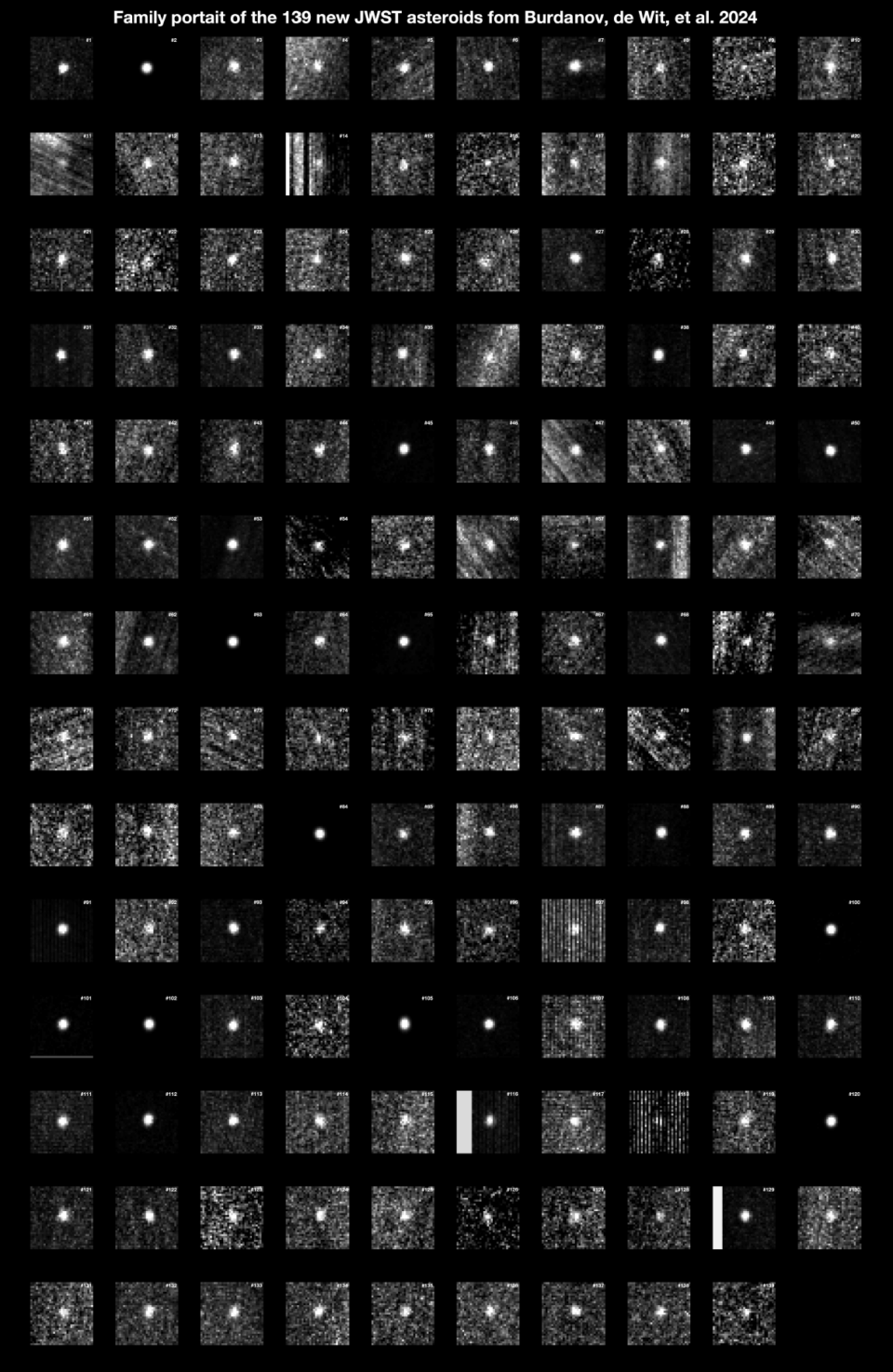Asteroids have been liable for extinction occasions tons of of tens of millions of years in the past on Earth, offering no scarcity of doomsday movie plots for Hollywood.
However researchers centered on asteroid monitoring are on a mission to find them for at this time’s real-world considerations: planetary protection.
The brand new and surprising discovery software utilized on this analysis is NASA’s James Webb House Telescope (JWST), which was tapped for views of those asteroids from earlier analysis and enabled by NVIDIA accelerated computing.
A world workforce of researchers, led by MIT physicists, reported on the quilt of Nature this week how the brand new technique was capable of spot 10-meter asteroids inside the primary asteroid belt situated between Jupiter and Mars.
These rocks in area can vary from the scale of a bus to a number of Costco shops in width and ship destruction to cities on Earth.
The discovering of greater than 100 area rocks of this dimension marks the smallest asteroids ever detected in the primary asteroid belt. Beforehand, the smallest asteroids noticed measured greater than half a mile in diameter.
Researchers say the novel technique — tapping into earlier research, asteroid artificial motion monitoring and infrared observations — will assist determine and monitor orbital actions of asteroids more likely to method Earth, supporting asteroid protection efforts.
“We’ve got been capable of detect near-Earth objects right down to 10 meters in dimension when they’re actually near Earth,” Artem Burdanov, the examine’s co-lead creator and a analysis scientist in MIT’s Division of Earth, Atmospheric and Planetary Sciences, advised MIT Information. “We now have a means of recognizing these small asteroids when they’re much farther away, so we are able to do extra exact orbital monitoring, which is essential for planetary protection.”
New analysis has additionally supported follow-up observations on asteroid 2024YR4, which is on a possible collision course with Earth by 2032.
Capturing Asteroid Photographs With Infrared JWST Pushed by NVIDIA GPUs
Observatories sometimes take a look at the mirrored mild off asteroids to find out their dimension, which might be inaccurate. Utilizing a telescope with infrared, just like the JWST, might help monitor the thermal indicators of asteroids for a extra exact means at gauging their dimension.

Asteroid hunters centered on planetary protection are looking for near-Earth asteroids. These rocks have orbits across the Solar which might be inside 28 million miles of Earth’s orbit. And any asteroid round 450 ft lengthy is able to demolishing a large metropolis.
The asteroid paper’s co-authors included MIT professors of planetary science co-lead Julien de Wit and Richard Binzel. Contributions from worldwide establishments included the College of Liege in Belgium, Charles College within the Czech Republic, the European House Company, and establishments in Germany together with the Max Planck Institute for Extraterrestrial Physics and the College of Oldenburg.
The work was supported by the NVIDIA Tutorial Grant Program.
Harnessing GPUs to Save the Planet From Asteroids
The 2024YR4 near-Earth asteroid — estimated as large as 300 ft and able to destroying a metropolis the scale of New York — has a 2.3% probability of putting Earth.
Motion pictures like Armageddon present fictional options, like implanting a nuclear bomb, however it’s unclear how this might play out off display.
The JWST expertise will quickly be the one telescope able to monitoring the area rock because it strikes away from Earth earlier than coming again.
The brand new examine used the JWST, the all time telescope within the infrared, on pictures of TRAPPIST-1, a star studied to seek for indicators of atmospheres round its seven terrestrial planets and situated about 40 mild years from Earth. The info embrace greater than 10,000 pictures of the star.
After processing the photographs from JWST to check TRAPPIST-1’s planets, the researchers thought of whether or not they might do extra with the datasets. They’re if they will seek for in any other case undetectable asteroids utilizing JWST’s infrared capabilities and a brand new detection method that they had deployed on different datasets known as artificial monitoring.
The researchers utilized artificial monitoring strategies, which doesn’t require earlier info on an asteroid’s movement. As a substitute it does “absolutely blind” search by testing doable shifts, like velocity vectors.
Such methods are computationally intense, and so they created bottlenecks till NVIDIA GPUs have been utilized to such work lately. Harnessing GPU-based artificial monitoring will increase the scientific return on assets when conducting exoplanet transit-search surveys by recovering serendipitous asteroid detections, the examine mentioned.
After making use of their GPU-based framework for detecting asteroids in focused exoplanet surveys, the researchers have been capable of detect eight recognized and 139 unknown asteroids, the paper’s authors famous.
“At this time’s GPU expertise was key to unlocking the scientific achievement of detecting the small-asteroid inhabitants of the primary belt, however there’s extra to it within the type of planetary-defense efforts,” mentioned de Wit. “Since our examine, the potential Earth-impactor 2024YR4 has been detected, and we now know that JWST can observe such an asteroid all the best way out to the primary belt as they transfer away from Earth earlier than coming again. And actually, JWST will do exactly that quickly.”
Gif attribution: https://en.wikipedia.org/wiki/2024_YR4#/media/File:2024_YR4_ESO-VLT.gif

